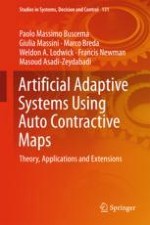2018 | OriginalPaper | Buchkapitel
2. Artificial Neural Networks
verfasst von : Paolo Massimo Buscema, Giulia Massini, Marco Breda, Weldon A. Lodwick, Francis Newman, Masoud Asadi-Zeydabadi
Erschienen in: Artificial Adaptive Systems Using Auto Contractive Maps
Aktivieren Sie unsere intelligente Suche, um passende Fachinhalte oder Patente zu finden.
Wählen Sie Textabschnitte aus um mit Künstlicher Intelligenz passenden Patente zu finden. powered by
Markieren Sie Textabschnitte, um KI-gestützt weitere passende Inhalte zu finden. powered by
